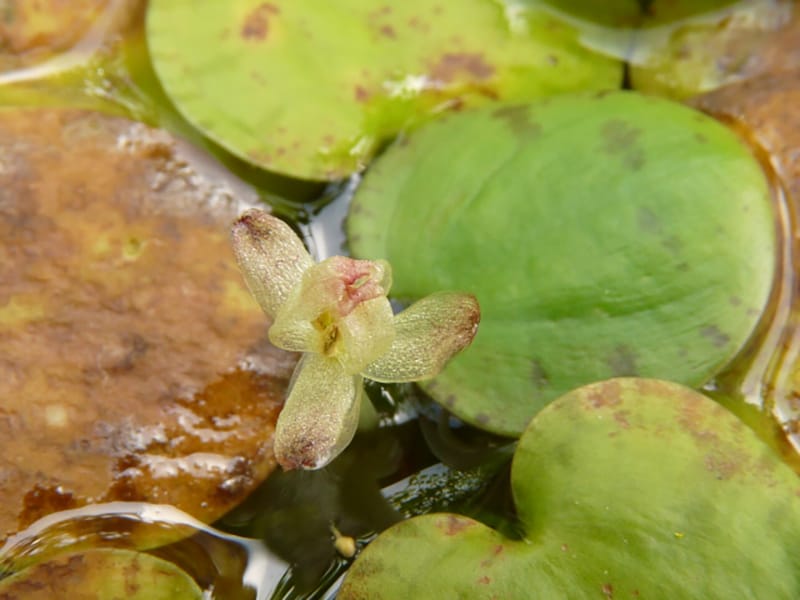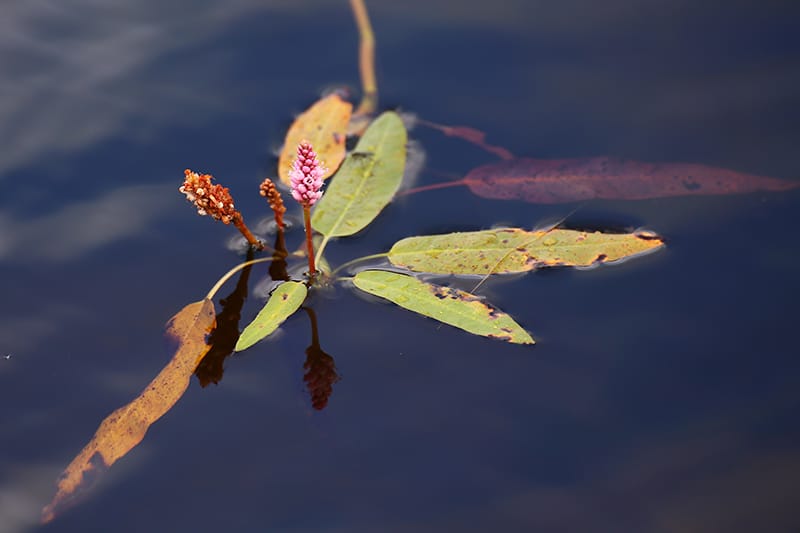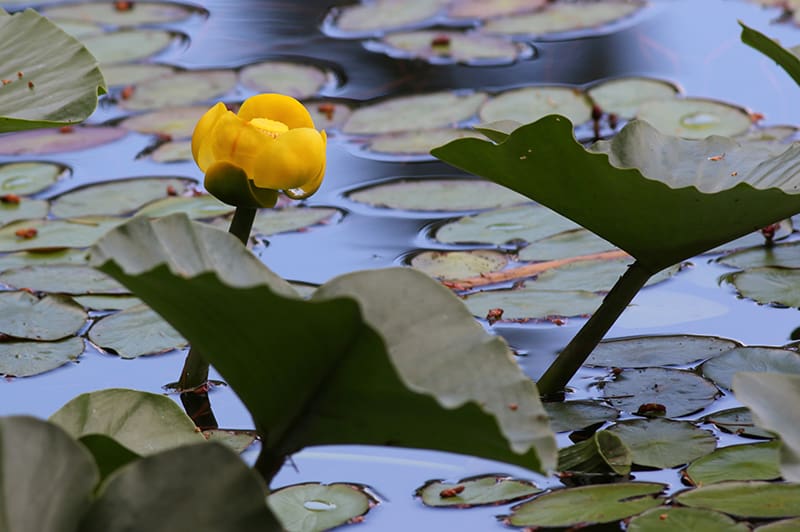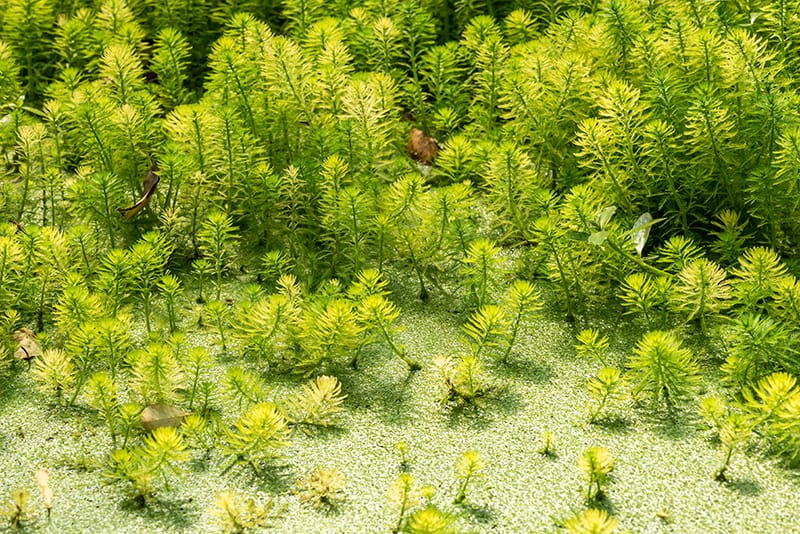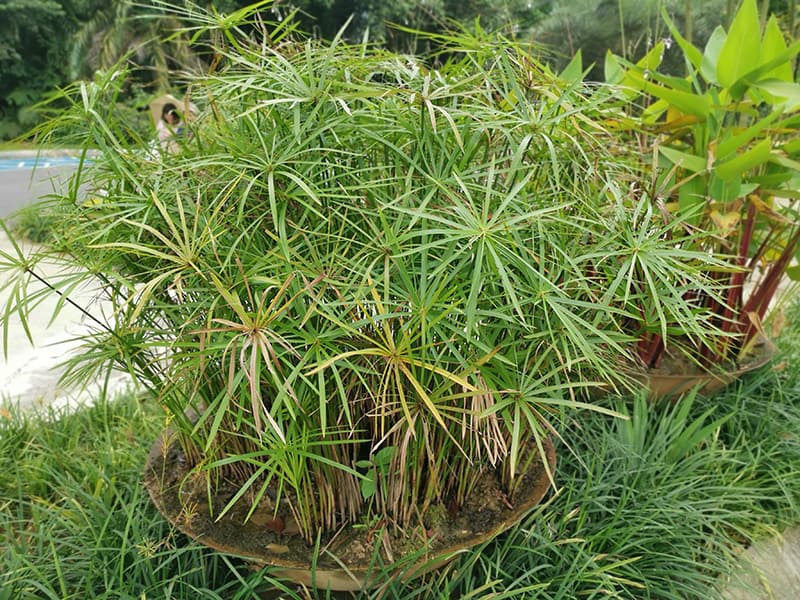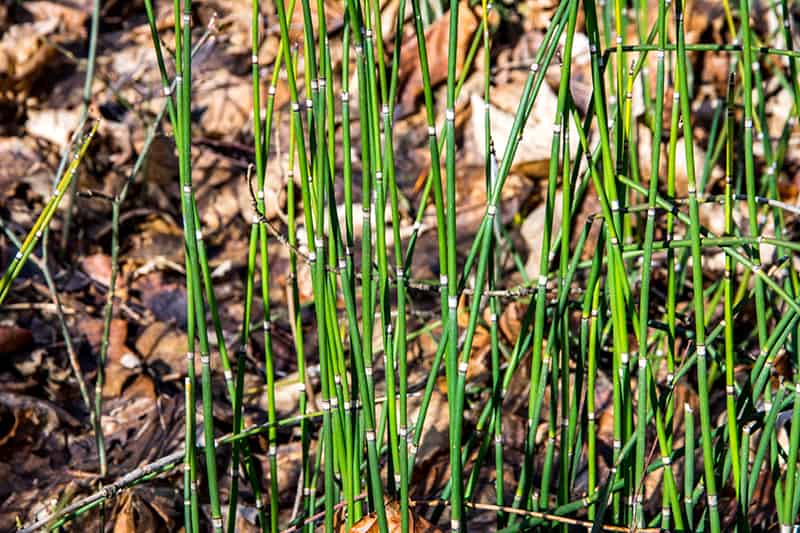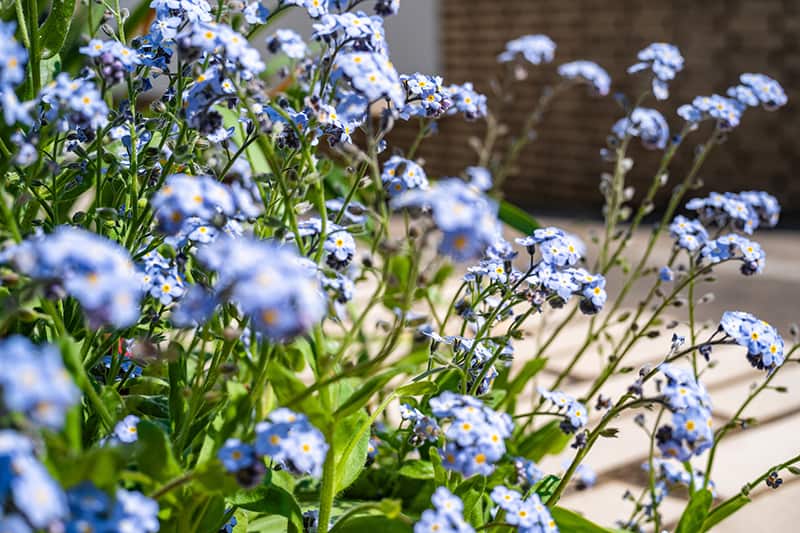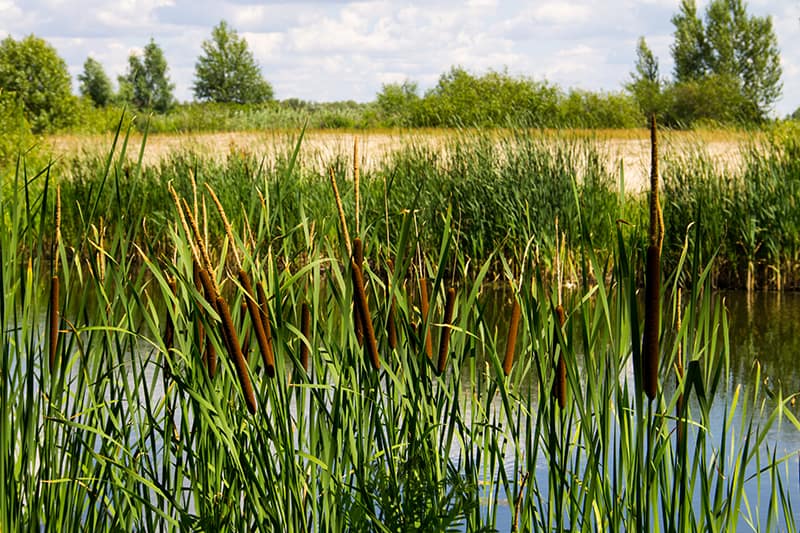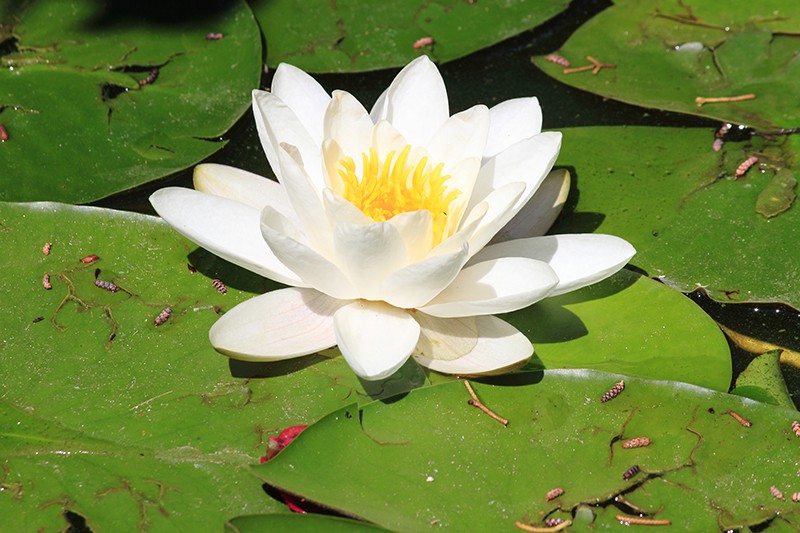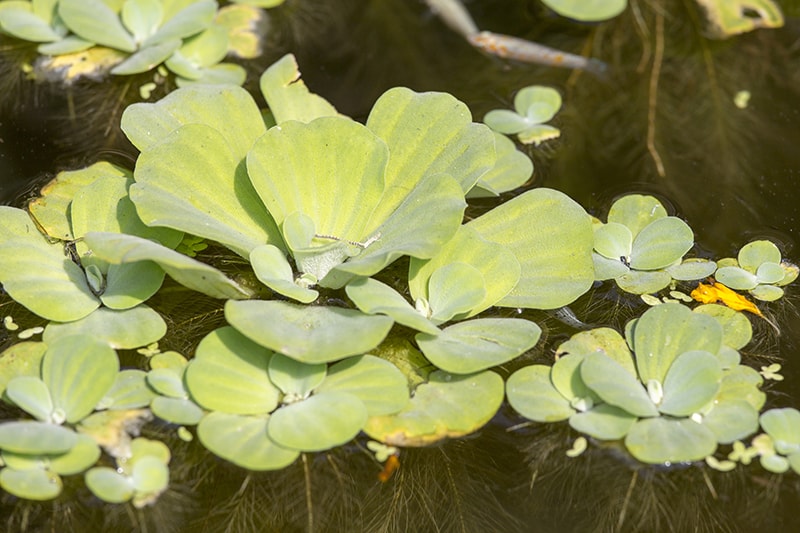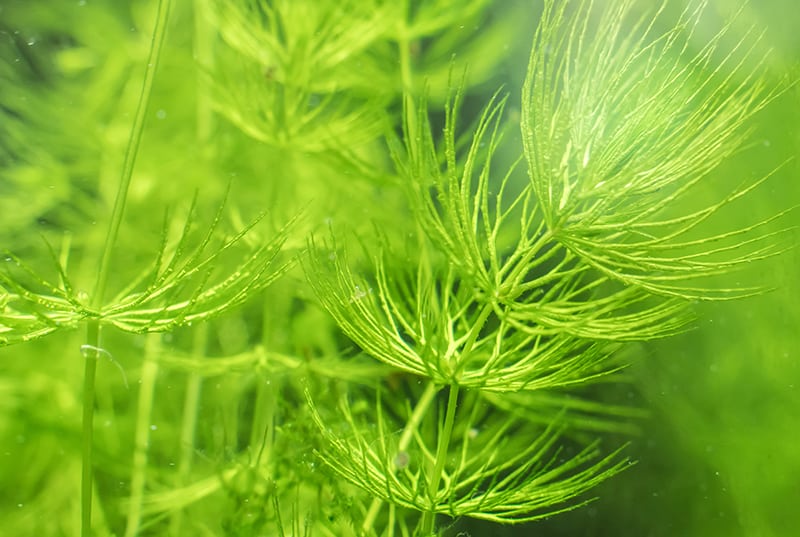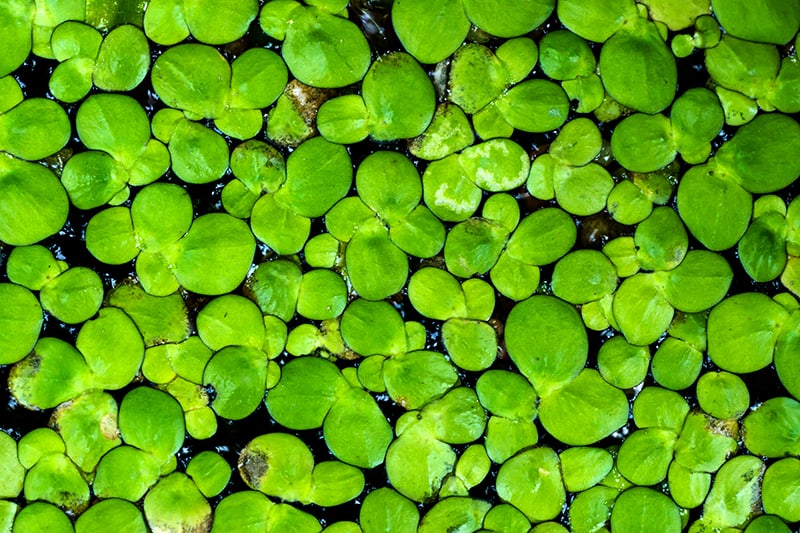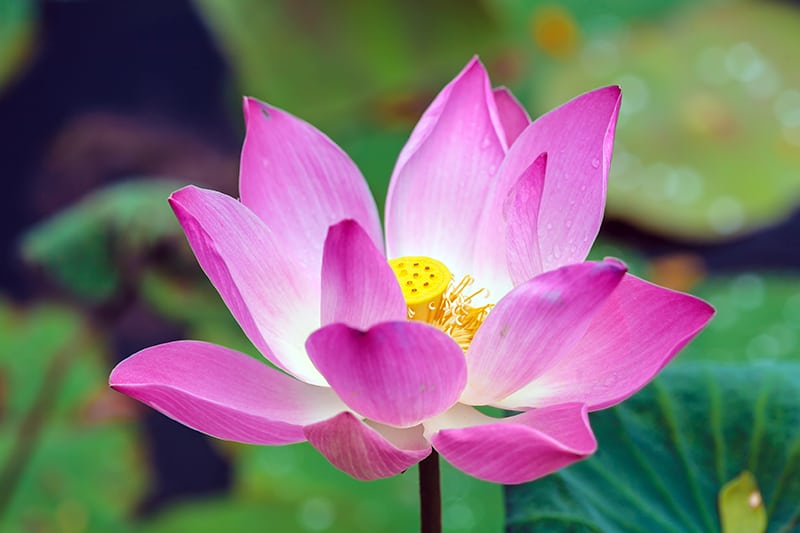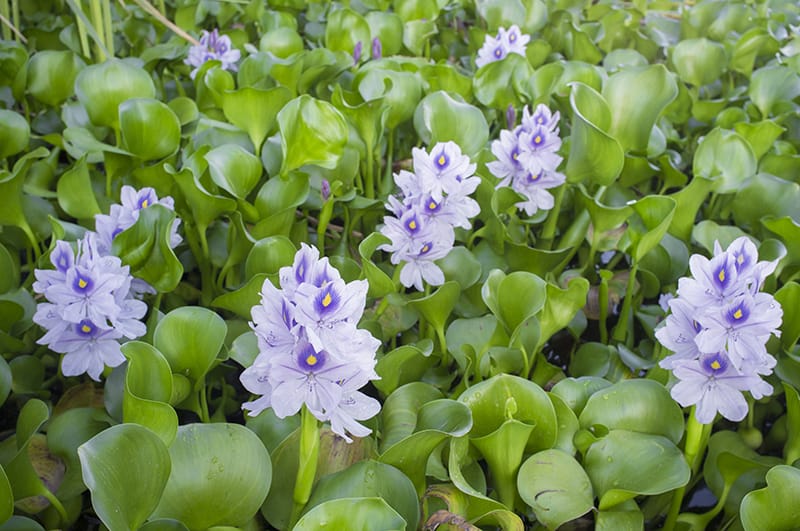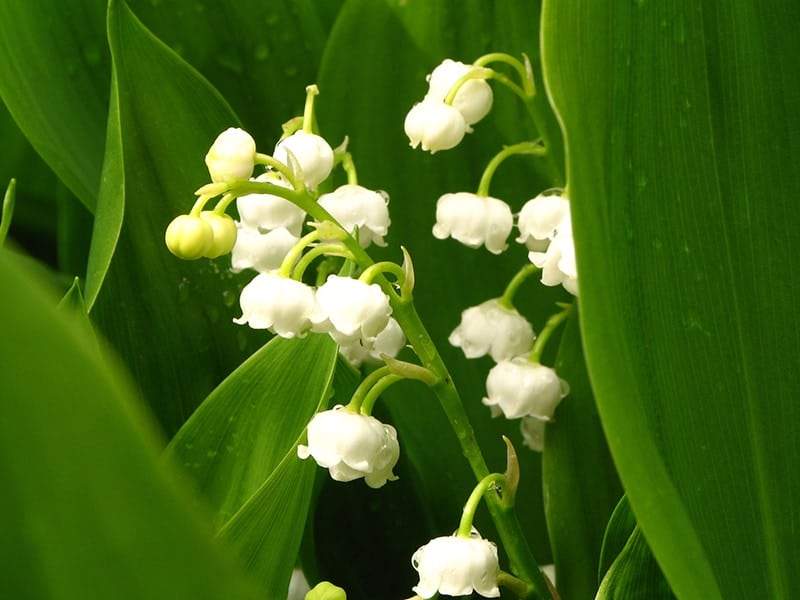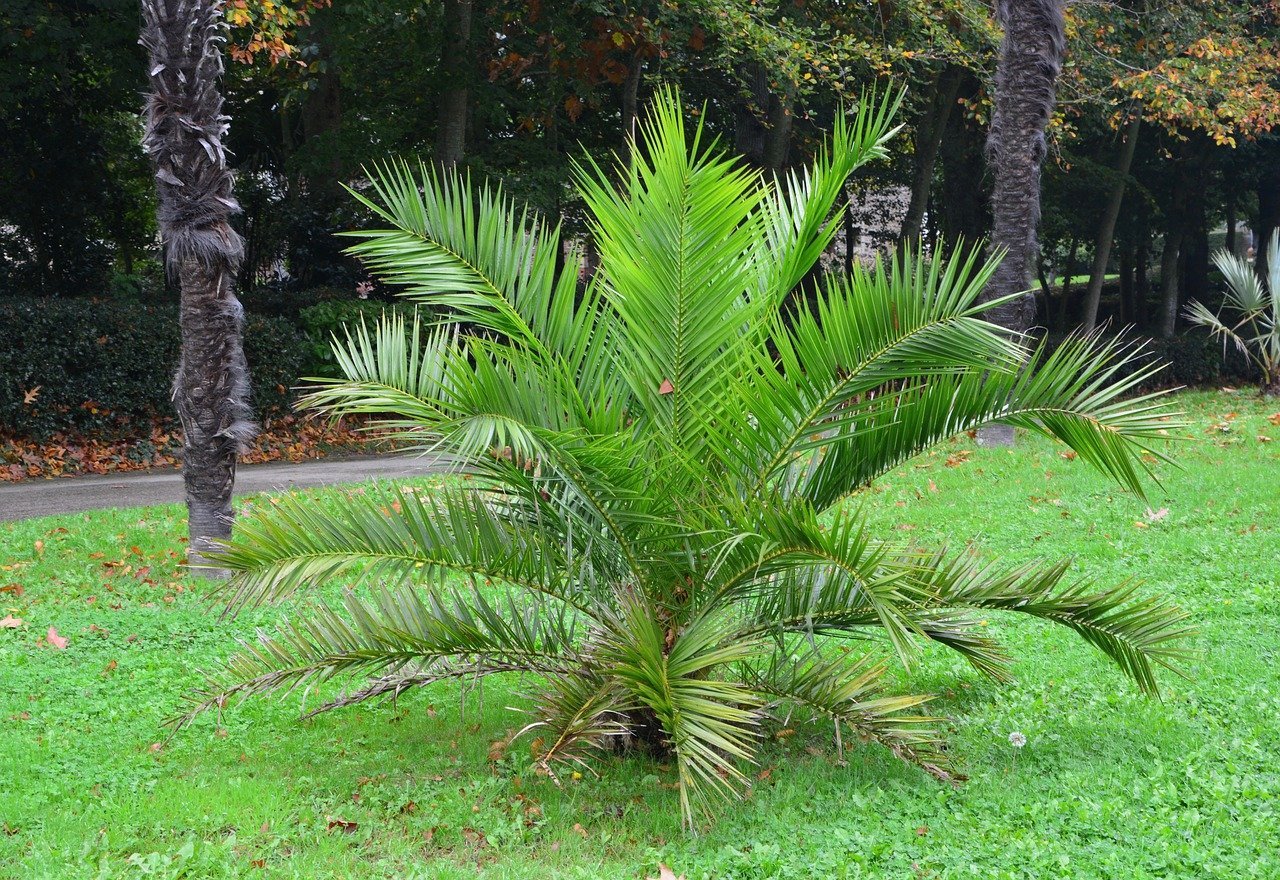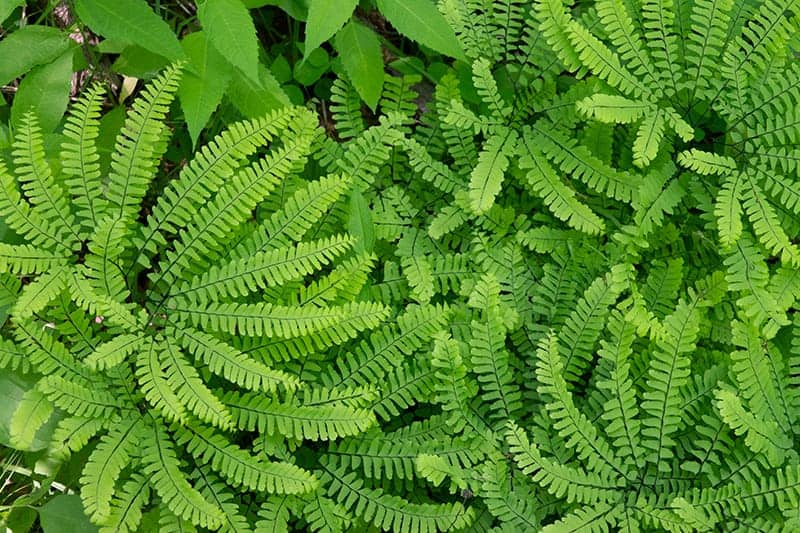When it comes to gardening, your plants are only as healthy as the ground ... Read More
- Home >
- 14 Low-Maintenance Water Plants – Growing Tips + Photos
14 Low-Maintenance Water Plants – Growing Tips + Photos
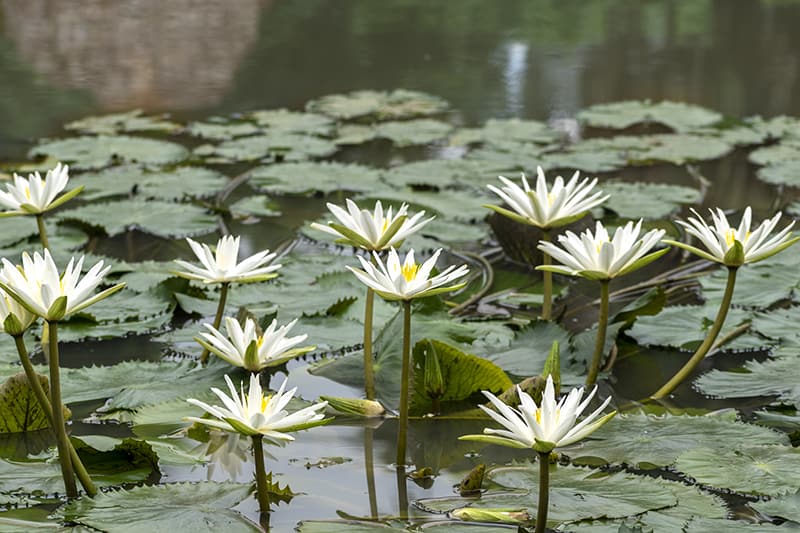
Water plants are aquatic or semi-aquatic species that can grow on top of, or submerged in water. These plants are generally very low maintenance because they don’t need to watered, and they provide many benefits to ponds, aquariums, and waterways, and contribute to healthy biodiversity. Some water plants are favored for their ornamental qualities, while others are selected as a means of supplying shelter or a food source for wildlife. This list covers some of the best water plants to be grown in a range of climates and conditions.
Water Plants
1. Amazon Frogbit
Credit to Show ryu
Scientific Name: Limnobium laevigatum
USDA Hardiness Zone: 8-11
Mature Size: 1.5 feet tall
Light: Full sun to partial shade
Water: Grow in water
This aquatic plant floats on the surface of the water and is also commonly known by the names ‘smooth frogbit’, ‘South American spongeplant,’ and ‘West Indian spongeplant.’ It is native to Central and South America, where it grows in freshwater tropical and subtropical habitats. In North America, it was originally grown as an ornamental pond plant but was accidentally introduced to local waterways through irrigation systems and canals.
The plant is often mistaken for water hyacinth, as these two plants look very similar. Amazon frogbit has rounded foliage that sits flat on the surface of the water when young, but once mature, reaches above the water level and holds its leaves up high. This plant produces small white flowers, but these are fairly insignificant, and the plant is grown for its attractive foliage.
This is a popular ornamental plant in ponds and home aquatic features, but it can spread quickly when left unchecked, sometimes to cover the entire surface of the water. You should thin out the plant annually to prevent this from happening. Once mature, allow the emergent leaves of the plant to stay dry otherwise and avoid allowing water droplets to sit on the foliage as this can cause them to rot.
2. Amphibious Bistort
Scientific Name: Persicaria amphibia
USDA Hardiness Zone: 5-9
Mature Size: Up to 6 feet tall
Light: Full sun to partial shade
Water: High water needs
Soil: Moist or wet soil
This plant is native to North America and can be grown in wet soils where it will take the form of a terrestrial plant, with its roots penetrating the soil, or it can grow as an aquatic plant entirely in water. When grown in soil, the plant will reach a maximum height of three feet, whereas as an aquatic plant, it can grow to six feet tall.
The plant produces long oval-shaped leaves that sit on the surface of the water, while tall, erect flower stems emerge from the water, blooming from the middle of summer through to fall. The flowers resemble bottle-brushes and arrive in a bright pink color. This is an attractive plant grown as an ornamental for both its pretty flowers and foliage. It performs best as an aquatic plant when placed at a depth of between 12 and 18 inches of water, making it ideal for ponds. It can grow in both full sun or partial shade.
3. Yellow Pond Lily
Scientific Name: Nuphar lutea
USDA Hardiness Zone: 6-11
Mature Size: Up to 4 feet tall
Light: Full sun to partial shade
Water: Grow in water
Also commonly known as ‘brandy bottle,’ this is an aquatic plant native to North America, notably the eastern US and some of eastern Canada. It is a striking plant that produces heart-shaped leaves measuring up to 16 inches across. These bright green leaves are typically held a few inches above the water’s surface, but sometimes they can float on top of it. The foliage is produced from stiff, chunky, erect stems, which grow from spongy rhizomes and can measure up to six feet in length.
This plant has a long blooming season, producing flowers from spring right through to fall. The flowers emerge from thick stems that protrude a few inches above the water. The flowers are cup-shaped and fleshy, in shades of bright yellow, lime green, and purple. They are also fragrant and open up each morning and then close up at night. This plant grows best in water between three and four feet deep, and can also thrive in wetlands. It can spread aggressively via creeping rhizomes, so if you want to prevent this, you should grow it in a plastic container under the water to keep it confined to one spot.
4. Parrot’s Feather
Scientific Name: Myriophyllum aquaticum
USDA Hardiness Zone: 6-10
Mature Size: Up to 5 feet tall
Light: Full sun to partial shade
Water: Grow in water
This perennial aquatic plant is native to South America, where it grows in abundance in the Amazon River. It is an invasive plant that is now found on every continent on earth, with the exception of Antarctica. In the United States, it grows predominantly in the south, as it thrives in warmer climates and waterways with high nutrient contents.
In some regions of the world, it has become very problematic due to the way it is able to root from tiny stem fragments and take over ponds, lakes, canals, and streams. It chokes out native plants, blocking sunlight and altering the natural course of growth, causing starvation to organisms that rely on native plants for food. For this reason, parrot’s feather has been banned from being sold in England and Wales since 2014. However, this plant is very attractive and so is popularly used as an ornamental plant in aquariums and garden water features.
It produces fine feather-like foliage, hence the common name of parrot’s feather, and it blooms with pretty pink flowers during summer and fall. It can be useful in providing shade or cover for some pond life as it forms a dense mat on the surface of the water, but if you use this plant, be sure to keep it in check and remove clumps of it periodically to prevent it from becoming overgrown. It will grow almost anywhere that has at least six inches of water.
5. Umbrella Palm
Scientific Name: Cyperus alternifolius
USDA Hardiness Zone: 8-11
Mature Size: Up to 4 feet tall
Light: Full sun to partial shade
Water: High water needs
Soil: Maintain wet soil
This aquatic plant is native to Madagascar and also goes by the names ‘umbrella sedge’ and ‘umbrella papyrus.’ In its native habitat, it grows in swamps of boggy soil or in waterways with its roots completely submerged in water. It is a popular ornamental plant across the globe and is the recipient of the Award of Garden Merit from the Royal Horticultural Society. It is a versatile plant that can be grown entirely in water in a pond, but it will also thrive in continuously moist soil such as that around the edge of a pond. It is also cultivated as a houseplant in soil that is watered frequently. When grown outside, this plant typically reaches heights of four feet, but houseplants usually top out at two feet.
This is an attractive plant, with tall, slender stems, which burst into lance-shaped clusters of leaves at the top, looking like a display of green fireworks. This plant needs a warm and humid-climate to survive, and its roots should be kept as wet as possible. Ideally, grow it directly in water, but otherwise use a soil that is kept constantly wet. It is a great houseplant for people who overwater and kill their plants, as the umbrella palm is impossible to over-water.
6. Rough Horsetail
Scientific Name: Equisetum Hyemale
USDA Hardiness Zone: 4-9
Mature Size: Up to 6 feet tall
Light: Full sun to full shade
Water: High moisture needs
Soil: Maintain wet soil
This evergreen perennial is native to North America, Europe, and Asia. Looks-wise, it is very similar to bamboo, with long and slender stems that have horizontal banding across the length; however, despite this feature, the plant is not related to the bamboo family. Rough horsetail is an attractive plant that thrives in wet conditions, so it is commonly used as an ornamental in ponds or in boggy land where many other plants would struggle to thrive.
This plant spreads aggressively via rhizomes, so in order to prevent it from taking over your pond, it is advisable to plant it in a plastic container submerged beneath the surface of the pond. You can also grow this plant in a container full of constantly wet soil to prevent it from spreading. The stems of this plant produce tiny leaves, but they are so minuscule that they are not typically noticed, and instead, the rough horsetail is grown for its attractive bright green stems that take on a bronze hue in fall. This plant adapts well to different levels of exposure and can survive in full shade, though it will perform best in full sun to partial shade.
7. Water Forget-Me-Not
Scientific Name: Myosotis scorpioides
USDA Hardiness Zone: 5-9
Mature Size: Up to 1 foot tall
Light: Full sun to partial shade
Water: High moisture needs
Soil: Continuously wet, poorly draining
This attractive, low maintenance plant is native to Europe, where it can be found growing in dense carpets along river banks and in boggy meadows. The plant spreads by creeping rhizomes, but it is not especially aggressive. The foliage of the plant is bright green and glossy, providing a pretty backdrop to the dainty blue flowers that bloom from early spring to early summer. These flowers sit on stems that emerge above the foliage and have contrasting mustard yellow centers.
This plant thrives when grown submerged in water or in wet soils. When grown in water, the water should be no deeper than four inches, so grow it in a shallow end of a pond, or in a plastic container submerged in a pond that is raised to just beneath surface level by bricks.
8. Broadleaf Cattail
Scientific Name: Typha latifolia
USDA Hardiness Zone: 3-10
Mature Size: Up to 10 feet tall
Light: Full sun to partial shade.
Water: High moisture needs
Soil: Any wet soils
This common aquatic and semi-aquatic plant is widely known across the world, growing in marshes, wetlands, streams, canals, and along the edge of river banks. It is also known as ‘bulrush’ and ‘reedmace.’ This plant is a perennial that produces wide leaves and flowers all summer long. Flower spikes resemble cats tails, hence the common name.
This plant is also edible and is an important source of wild food. The roots can be cooked and eaten like potatoes, while the stems and flower spikes can be eaten raw or cooked, as an alternative to asparagus. These plants thrive in very moist soils, or when grown submerged in water of a maximum depth of six inches. It cannot tolerate shade.
9. White Water Lily
Scientific Name: Nymphaea alba
USDA Hardiness Zone: 4-8
Mature Size: Up to 1 foot tall
Light: Full sun
Water: High moisture needs
Soil: Maintain wet soil
This plant is native to Europe, Asia, and North Africa, and is also commonly known as the European water lily. It produces large white cup-shaped flowers that are in bloom from mid to late summer. The double flowers have a similar look to dahlias and are sometimes flushed with pink on the outer petals. The foliage of the plant sits on top of the surface of the water as lily pads, with each leaf measuring up to 16 inches across. White water lilies thrive in large ponds and lakes because it needs to be grown in fairly deep water with a depth of between one and five feet. It can also be grown in wet soil. White water lilies enjoy full sun and will not tolerate shade.
10. Mosquito Fern
Scientific Name: Azolla sp.
USDA Hardiness Zone: 7-10
Mature Size: Up to 1 inch tall
Light: Full sun to partial shade
Water: Grow in water
Mosquito ferns comprise seven aquatic plants that make up the Azolla genus. Despite their common name, they do not resemble true ferns and instead look more like a moss floating on the water, or a type of duckweed. This has also given rise to the common names for this plant of ‘duckweed fern,’ and ‘water fern,’ and ‘fairy moss.’ The name ‘mosquito fern’ is a reference to the belief that mosquitos are unable to lay their eggs on water’s surface that is covered by this plant.
This is an invasive aquatic plant that grows incredibly quickly and aggressively. It is possible for the plant to double in size in less than two days. They thrive in wetlands, ditches, lakes, and streams, where they can cover the surface of the water in almost no time. They, unfortunately, choke out native plants by depriving them of light and can cause significant damage to the natural biodiversity of the bodies of water where they grow.
However, this invasive nature also has its benefits, as the plant is used as a means of controlling weeds in rice paddies throughout Asia. Although this plant can be invasive in some conditions, it is a popular ornamental plant in aquariums. Its dense and quilt-like foliage forms an attractive mat on the surface of the water and prevents pests from penetrating. It thrives in warm and humid-climates similar to its native tropical habitats.
11. Hornwort
Scientific Name: Ceratophyllum demersum
USDA Hardiness Zone: 3-11
Mature Size: Up to 10 feet long
Light: Full sun to full shade
Water: Grow in water
This aquatic plant is native to all continents on earth except for Antarctica. In North America, it grows natively in every US state and every Canadian province, with the exception of Newfoundland. It is a free-floating plant, producing brush-like foliage in a shade of bright green. It also blooms with green-brown flowers. This is a very attractive plant that is popularly used as a submerged plant in fish tanks and aquariums.
To submerge the plant, you will need to weigh down one of the bunches and then hide the weight in the aquarium’s sand or pebbles. Otherwise, you can also select bunches of this plant to float on the water’s surface. This plant will continue to grow even at great depths and serves as a useful oxygenator. In spite of its many benefits, it can also grow to become very dense and choke out other vegetation. This has led to the plant being declared as a weed in some parts of Australia, and as an invasive species in New Zealand. This is an easy to grow plant that thrives in full sun to partial shade but can also withstand full shade. It is useful for providing shelter for fish and even does well in hard water.
12. Duckweed
Scientific Name: Lemnoideae
USDA Hardiness Zone: 4-10
Mature Size: 0.2 inches tall
Light: Full sun to partial shade
Water: Grow in water
Duckweeds are a series of aquatic plants that live just above or just below the surface of the water. They are tiny plants that are known to be among the smallest plants in the world, and in fact, they produce the smallest flowers of any plant in the world, with each bloom measuring around 0.01 inches across.
The plants grow in large patches to create dense mats of carpet on the surface of the water, creating protection and shade for aquatic creatures. It is an attractive plant that provides a source of food for ducks and some types of fish, including koi carp. It can be grown in ponds or indoors in aquariums, though it requires at least six hours of direct light each day to survive. Grow it in a warm and sunny spot for best performance.
13. Sacred Lotus
Scientific Name: Nelumbo Nucifera
USDA Hardiness Zone: 4-10
Mature Size: Up to 6 feet tall
Light: Full sun
Water: Grow in water
Soil: Wet soil
This plant is native to Asia and Australia and is known as the sacred lotus because of the flowers’ significance in Hinduism and Buddhism. It is a visually stunning plant that produces large leaves measuring up to two feet across, which rest on the surface of the water. The flowers are also large, measuring up to one foot across. They have a cupped shape, are very fragrant, and arise on stiff stems that emerge from the water. Flowers can be pink and white, with each bloom lasting just three days. Flowers are produced throughout June and July, which open up in the morning and close in the evening.
These plants thrive in full sun, in calm water. They root in the boggy soil beneath bodies of water and spread through rhizomes. All parts of this plant are edible and are used in Asian cuisine. They are surprisingly hardy and can survive cold winters as long as the water doesn’t freeze down as far as the roots of the plant.
14. Common Water Hyacinth
Scientific Name: Eichhornia crassipes
USDA Hardiness Zone: 9-11
Mature Size: Up to 3 feet tall
Light: Full sun
Water: Grow in water
This is a perennial aquatic plant that is free-floating on the surface of the water. It requires warm weather to thrive, and in climates below zone 9, it is sometimes grown as an annual. The common water hyacinth is native to Brazil, but outside of this region, it is commonly regarded as an invasive species. In optimum environments, the plant grows rapidly to form a dense carpet that can choke other vegetation and cause biodiversity issues in waterways. In climates where the winter frost kills off the plant, it is much less of a threat and offers several benefits to the areas in that it grows.
It is an attractive ornamental, which produces spikes of lavender flowers from early to late summer. The foliage is glossy and grows in charming rosettes. The roots of the plant dangle down into the water, providing shelter or a spawning spot for fish. It also helps to inhibit the growth of algae, which in turn keeps water clear.
Related Content
-
How to Use Bone Meal Fertilizer in Your Garden
-
Top 15 Most Beautiful Flowers You Can Grow In Your Garden Immediately
"Flowers are the music of the ground. From earth's lips spoken without sou... Read More
-
What is Perlite? What is its use in the garden?
Have you ever used a bag of commercial potting soil? If so, you may have n... Read More
-
Fungus Gnats – How to Identify, Prevent, and Control Them
If you have spotted a small dark fly buzzing around your hydroponic garden... Read More
